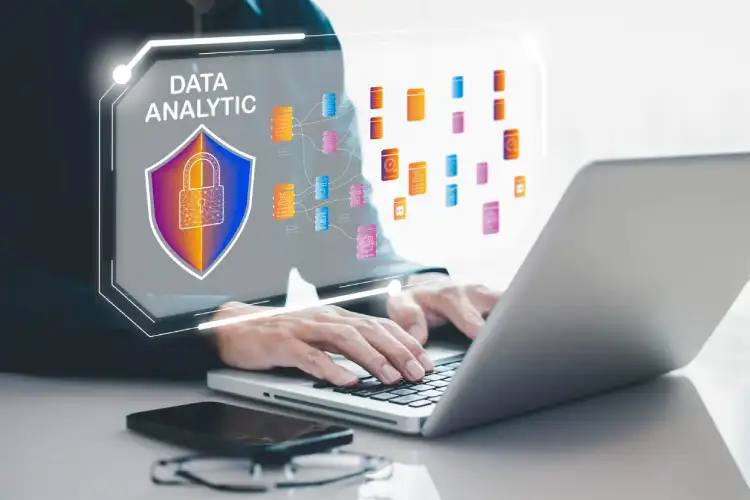- 14 Nov 2025
Enterprise strategies for migrating row-level security across modern analytics platforms
M odern enterprises increasingly rely on distributed analytics environments that span cloud BI tools, departmental data marts, and enterprise data warehouses. As these ecosystems expand, migrating row-level security becomes one of the most technically demanding components of any BI modernization program. This challenge becomes even more complex when legacy tools use proprietary filters, static user rules, or undocumented logic embedded deep within reports.
Many organizations begin modernization with the assumption that security policies will transfer cleanly. Instead, they discover fragmented permission logic, inconsistent rule structures, and outdated access controls that create major compliance risks.
Why migrating row-level security requires an enterprise-level strategy
When organizations move from traditional reporting tools to platforms such as Oracle Analytics Cloud, Tableau, Power BI, or Looker, they often uncover structural inconsistencies that impede the migration of row-level security. These gaps expose sensitive data, disrupt governed reporting workflows, and undermine trust across business units. The impact becomes even more significant for regulated industries, where accurate data access governance is essential for audit readiness and operational transparency.

Legacy BI systems frequently embed security logic directly in reports rather than centrally within a semantic layer. As a result, migrating row-level security requires not only technical translation but a complete reassessment of user roles, attributes, and policy enforcement mechanisms across the modern platform. Without a plan, misaligned filters and incorrect entitlements create operational slowdowns and introduce data inconsistencies that affect decision-making.
How enterprises can approach migrating row-level security with a scalable modernization model
A successful modernization effort begins with a deep analysis of the existing environment and the underlying security model modernization needs hidden within legacy BI systems. This includes extracting rules embedded in SQL statements, metadata layers, and application-level filters. Enterprises often face the added challenge of large user populations, departmental autonomy, and years of custom report logic that must be reconstructed within a structured, governed framework.
Once security policies are documented, organizations can restructure them through a unified identity architecture that supports BI security migration into scalable cloud-ready formats. This introduces consistency, reduces redundancy, and aligns reporting consumption with enterprise-wide standards. Modern platforms also introduce advanced capabilities, such as attribute-based access control, enabling enterprises to map legacy logic into more flexible, maintainable structures.
As the project expands, migrating row-level security requires mapping every legacy entitlement into a target model that supports sustainable administration. Establishing clear relationships among users, roles, and business domains provides the foundation for accurate user-level data filtering, ensuring that individuals interact only with data appropriate to their operational responsibilities.
Security mapping then integrates with enterprise identity systems, allowing smoother alignment with an organization's broader identity and access management (IAM) integration strategy. This ensures authentication, authorization, and entitlement management function cohesively across all analytics platforms.
Organizations adopting cloud analytics often extend reporting to multiple business units or external partners, increasing the importance of structured multi-tenant data protection within the re-engineered RLS model. This reinforces boundary controls and preserves data confidentiality across stakeholder groups.
The final and most technical phase of migrating row-level security involves interpreting legacy filters and converting them into consistent row-level permission mapping rules within the target platform. Modern rule engines allow administrators to define standardized expressions that minimize maintenance overhead and reduce the risk of drift between environments.
Enterprises then validate converted rules through controlled test cycles, including staging environments designed for RLS implementation frameworks that support iterative refinement. This ensures accuracy before the system is promoted into production.
As testing advances, teams conduct structured validation using scenario-based access checks to ensure the reliability of RLS rule testing and validation. These checks confirm that authorization logic behaves consistently across roles, departments, and data domains.
Finally, enterprises complete migrating row-level security by validating the lineage of security logic itself. This step aligns historical models with modern frameworks through accurate data lineage and entitlement mapping, ensuring that every security decision is explainable, auditable, and compliant.
Executive outlook on success factors for migrating row-level security
Enterprises that succeed with migrating row-level security adopt a lifecycle approach rather than a quick technical translation, centralizing policy management, eliminating embedded rule inconsistencies, and leveraging identity-aware security models to position organizations for long-term scalability. As BI ecosystems evolve, so do compliance requirements, making the modernization of RLS a strategic necessity for organizations that rely on governed analytics for operations, regulatory activity, or customer service.
A strategic closing insight: the path forward for secure BI modernization
The journey oracle-fusion-hcm-consultant-hr-benefits migrating row-level security is not just a technical conversion but a structural rethinking of how data access should operate across the enterprise. By unifying governance, role modeling, attribute-based filtering, and platform-agnostic entitlement strategies, organizations can modernize with confidence while reducing long-term maintenance and compliance risk.
Why DataTerrain is the partner of choice for enterprise-grade RLS modernization
DataTerrain specializes in complex BI modernization projects, including the complete lifecycle of migrating row-level security for large enterprises operating in regulated and data-intensive sectors. With automated extraction tools, metadata intelligence, and proven migration accelerators, DataTerrain reduces manual effort and ensures accuracy when converting legacy RLS structures into modern analytics platforms.
Our solutions provide organizations with a structured pathway for secure modernization, minimizing operational disruption and maximizing alignment with compliance requirements. Enterprises seeking precision, scalability, and genuine modernization trust DataTerrain to deliver migration outcomes that are both technically sound and future-ready.
If your organization is preparing to migrate to row-level security, DataTerrain can deliver a streamlined, audit-ready transformation that positions your BI ecosystem for long-term performance and governance.